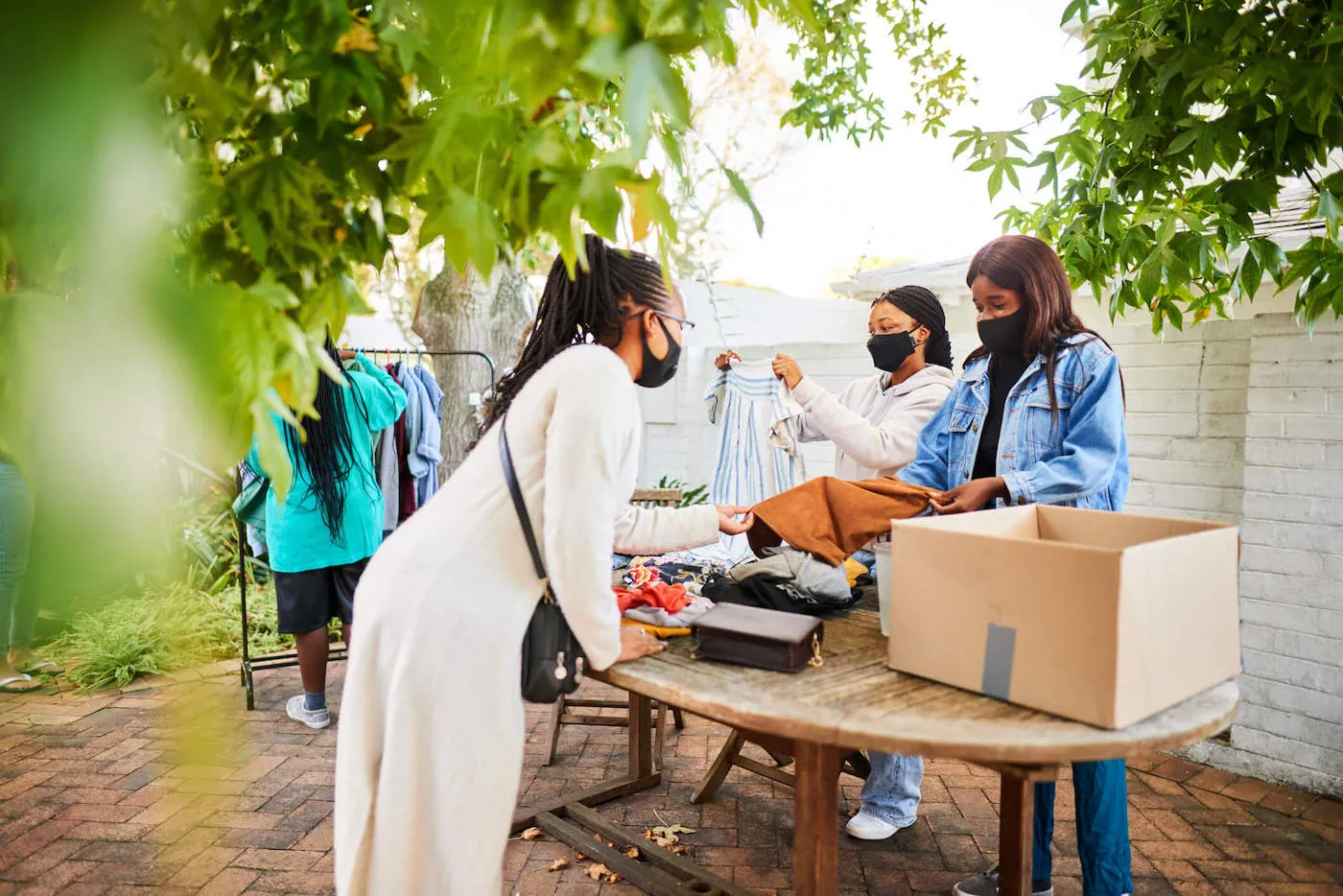How to Save Money With “Buy Nothing” Groups
Quick Answer
Buy Nothing groups are community-oriented, social media-based groups that make it possible to pass on unneeded items and products in a local area for free.

With inflation continuing to hold at some of the highest levels in decades, many consumers are looking for a way to shop smarter—including getting something for nothing.
Some have found an answer in "Buy Nothing" groups on social media. These neighborhood-based groups allow members to easily give away items they no longer want or need. Buy Nothing groups can be a good way to save some money on things you'd otherwise have to buy.
What Are Buy Nothing Groups?
When you sign up for a Buy Nothing group on a social media app, you'll see posts of items your neighbors no longer need, such as some unopened food they aren't going to cook, a bookshelf they don't want anymore or even exercise equipment. You can comment on things you would like and set up a pickup time if they are still available.
These groups work on a "gifting economy," wherein there are no costs associated with receiving goods from the Buy Nothing group. It's not about swapping, bartering or buying for a low price. Things are simply free.
The Buy Nothing Project was started in the Pacific Northwest by two friends who hoped it would help people buy less items that would eventually end up being thrown away or polluting local environments. It has since expanded into a community that encompasses thousands of independent neighborhood groups.
Buy Nothing groups commonly operate on Facebook. To find your local Buy Nothing group, search your neighborhood name plus "Buy Nothing" to see if one pops up. Smaller cities and towns may have their own dedicated group.
What Are the Benefits of Buy Nothing Groups?
Buy Nothing groups offer some great financial benefits. These include:
- Free stuff: The most obvious benefit is that the items up for offer on Buy Nothing groups are available free of charge.
- No tax: In states where there is state or local sales tax, free transactions remove sales tax, which could be significant, such as Louisiana's 9.55% combined sales tax or California's 7.25% state sales tax.
- No shipping: By focusing on local items, group members can save on shipping costs associated with ordering online.
- No disposal/removal costs: Gifters in Buy Nothing groups can save on the cost of disposing of or removing large items such as mattresses or appliances, which require extra fees at some transfer stations or expensive transportation costs if you can't move it yourself.
Financial Downsides of Buy Nothing Groups
Like many shopping options, there are a few downsides to Buy Nothing groups that consumers should be aware of before getting involved. Some of the extra costs associated with free items include:
- Repair costs: Broken items may be more expensive to repair than you initially think. Research some replacement part prices before nabbing a free broken bike or tool. That free piano might need a costly tuning to get it playable, for example.
- Transport costs: Large items may still incur transportation costs, like renting a truck or paying someone to deliver it.
- No tax-deductible donations: While some 501(c)(3) thrift stores and organizations that accept donations are tax-deductible, the Buy Nothing Project is a B Corp and cash donations are not deductible, which means your physical donations likely are not either. Buy Nothing groups on social media are not a viable way to make tax-deductible donations.
Other Ways to Spend Less Money
Even if you can't get everything for free off a social media group, there are other great strategies to make it possible to spend less and save more money.
- Create a budget. Knowing where your money is going is the most important part of saving. Creating a budget can make you more aware of spending habits and places you could save.
- Lower or negotiate utility bills. When was the last time you checked competitor rates for internet service in your area? You may be surprised to see prices well below what you're currently paying. That's why it's a good idea to review and negotiate your bills about once a year to save yourself money.
- Do repairs yourself. If you've got a well-stocked hardware store nearby and access to YouTube videos, one of the best ways you can save money as a homeowner is to start doing repairs yourself. The average cost for a plumber to come out is $327, but you can spend a lot less by buying a good wrench and finding a free tutorial online.
- Compare your car insurance rates. Insurance comparison sites can help you shop rates quickly. Experian's auto insurance comparison tool allows you to compare your current car insurance rates in minutes with 40 top providers and potentially save on your premium.
- Reduce subscriptions. Trimming subscriptions can always help when you need to tighten up your budget, especially if they are redundant. Review your spending to see if you can crop out duplicate memberships to delivery platforms and streaming services.
Coping with historic inflation can feel stressful, but there are many ways to save and meet your budget goals. Check out your local Buy Nothing group to score some great stuff at no cost.
Want to lower your monthly bills?
We’ll negotiate bills for you and cancel unwanted subscriptions.
Get startedAbout the author
Emily Cahill is a finance and lifestyle writer who is passionate about empowering people to make smart choices in their financial and personal lives. Her work has appeared on Entrepreneur, Good Morning America and The Block Island Times.
Read more from Emily